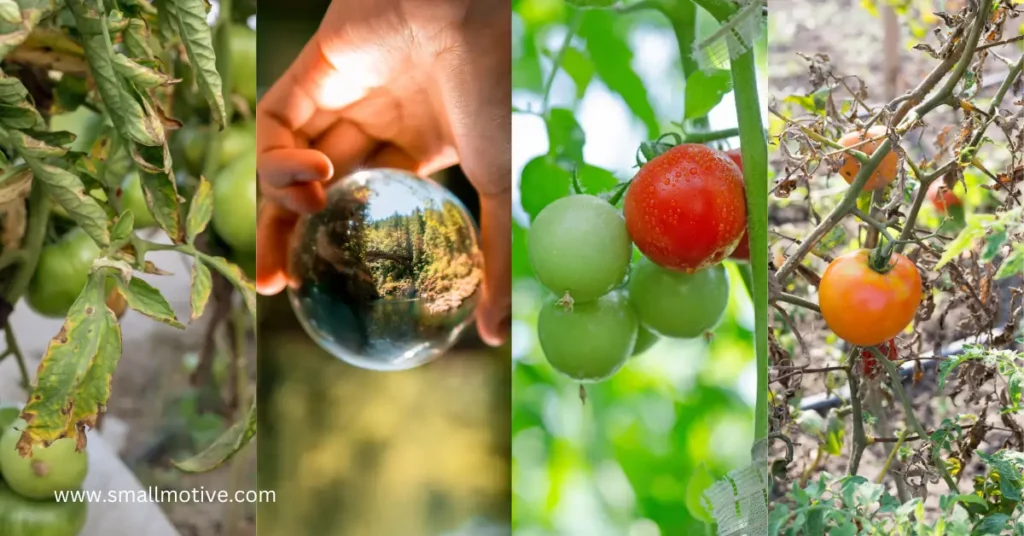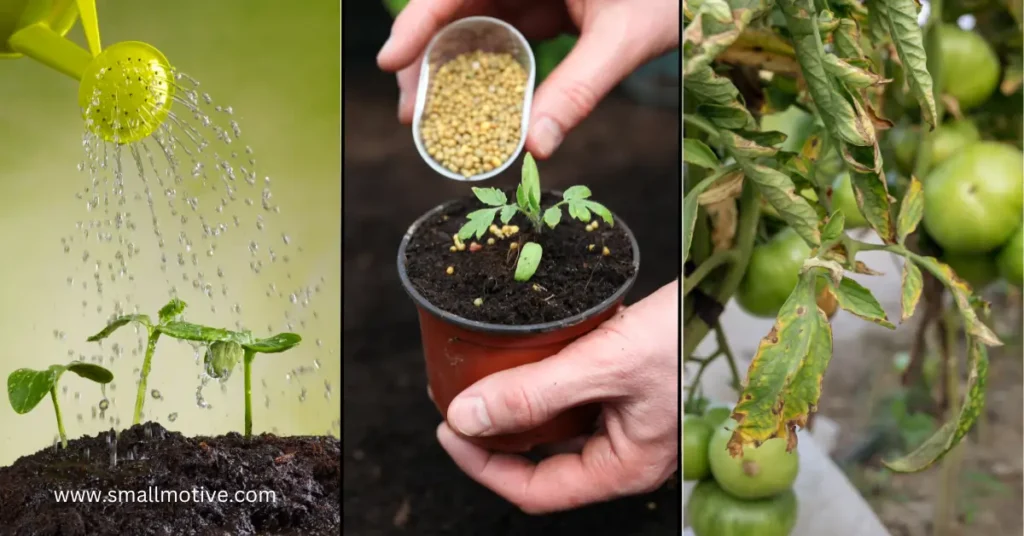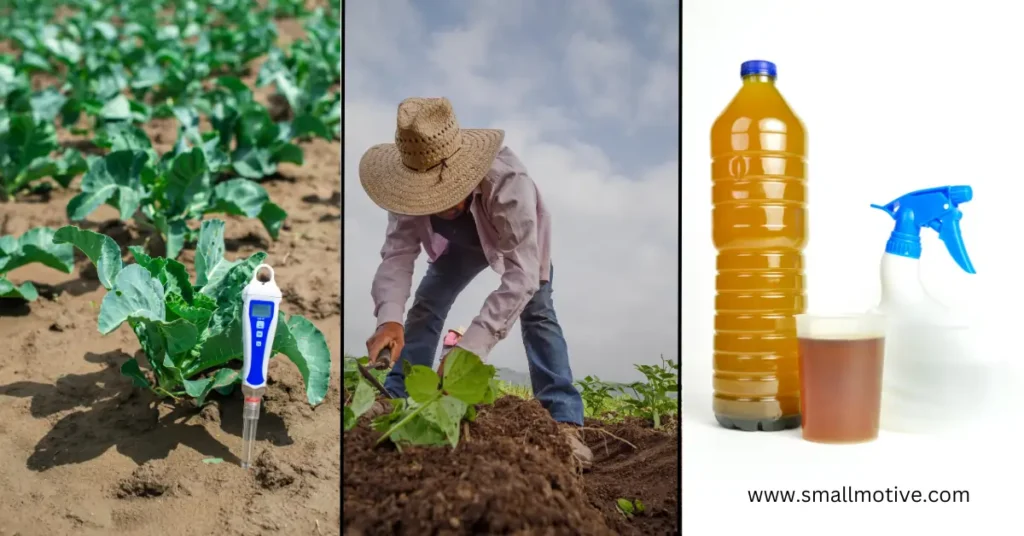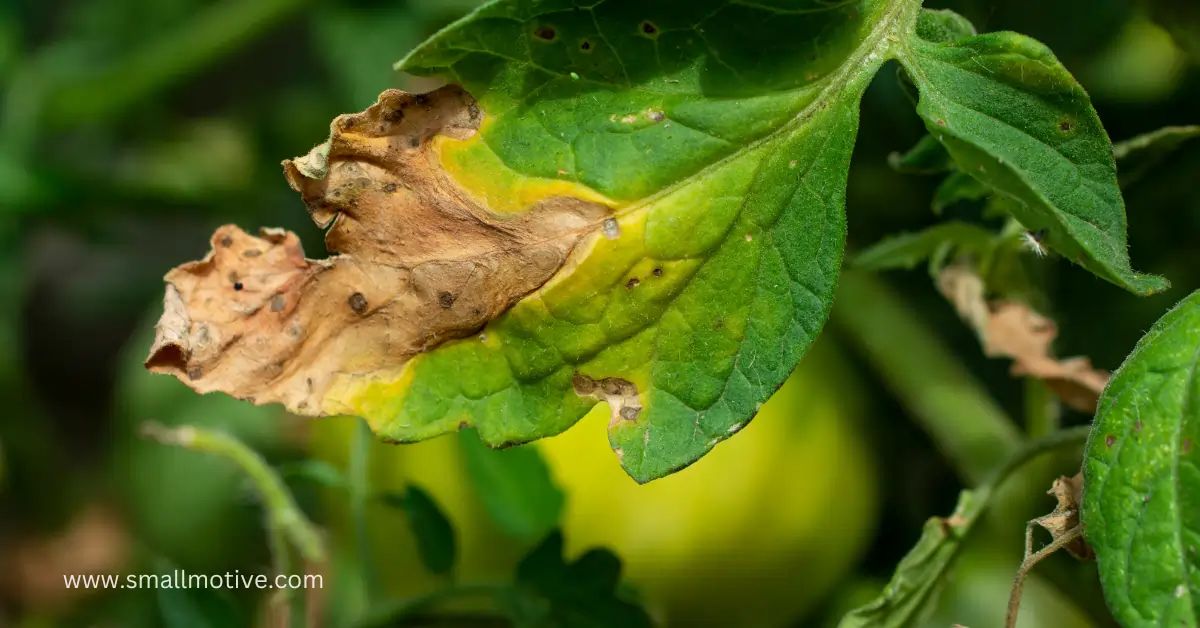Introduction
You’re not alone if you’ve noticed your tomato plants developing yellow leaves. This common issue can be alarming, but understanding the causes and implementing appropriate measures can help restore your plants’ health. In this guide, we’ll explore the reasons behind yellow leaves on tomato plants and how to address them effectively.
Understanding Yellow Leaves on Tomato Plants
1. Causes of Yellow Leaves
Yellowing of tomato plant leaves can stem from various factors, including environmental conditions, nutritional deficiencies, pests, and diseases.
2. Environmental Factors
Extreme temperatures, excessive sunlight, or inadequate sunlight exposure can all contribute to yellowing leaves. Additionally, fluctuations in moisture levels, either too much or too little water, can stress the plants, leading to leaf discoloration.
3. Nutritional Deficiencies
Tomato plants require specific nutrients for healthy growth. Deficiencies in essential nutrients such as nitrogen, potassium, or magnesium can manifest as yellowing leaves. Imbalanced soil pH can also impede nutrient uptake, exacerbating the problem.
4. Pests and Diseases
Insect infestations, such as aphids or spider mites, can damage tomato plants and cause yellowing leaves. Likewise, fungal infections like early blight or bacterial diseases such as bacterial spots can lead to leaf discoloration and deterioration.

Diagnosing Yellow Leaves
1. Visual Symptoms
Examining the pattern and appearance of yellowing leaves can provide clues to the underlying issue. Pay attention to the location of discoloration, leaf patterns, and any accompanying symptoms like spots or lesions.
2. Conducting Soil Tests
Testing the soil for nutrient levels and pH can help identify potential deficiencies or imbalances affecting the plants. Soil tests can guide targeted fertilization efforts to address nutrient deficiencies and restore soil health.
3. Identifying Pests and Diseases
Inspecting the plants for signs of pests or diseases, such as visible insects, webbing, or characteristic lesions, can aid in diagnosis. Identifying the specific pest or pathogen allows for appropriate treatment measures.
Preventing Yellow Leaves
1. Proper Watering Techniques
Maintaining consistent moisture levels in the soil through regular watering practices can prevent stress-related yellowing of leaves. Water deeply and evenly, avoiding both drought stress and waterlogging.
2. Fertilization Practices
Providing adequate nutrients through balanced fertilization promotes healthy foliage and reduces the risk of nutrient deficiencies. Choose fertilizers formulated specifically for tomatoes and follow recommended application rates.
3. Pest and Disease Management
Implementing proactive pest and disease management strategies, such as using companion planting, mulching, or introducing beneficial insects, can prevent infestations and infections before they cause significant damage.

Treating Yellow Leaves
1. Adjusting Soil pH
If soil tests indicate imbalanced pH levels, amend the soil accordingly to optimize nutrient availability for the plants. Incorporating organic matter or applying pH-adjusting amendments can help restore soil pH balance.
2. Applying Organic Remedies
Natural remedies like neem oil, garlic spray, or homemade botanical solutions can effectively control pests and diseases without harming beneficial organisms or the environment. Regular application can help mitigate existing issues and prevent recurrence.
3. Using Chemical Treatments (if necessary)
In severe cases where pests or diseases pose a significant threat to plant health, chemical treatments may be necessary. Choose products labeled for use on tomatoes, follow application instructions carefully, and observe recommended safety precautions.

Conclusion
Yellow leaves on tomato plants can indicate various underlying issues, from environmental stressors to nutrient deficiencies and pest infestations. By understanding the causes, diagnosing the problem accurately, implementing preventive measures, and employing appropriate treatments, gardeners can effectively manage yellowing leaves and promote the overall health and productivity of their tomato plants.
FAQs
1. Why are my tomato plant leaves turning yellow?
Yellowing leaves on tomato plants can result from environmental factors like extreme temperatures, inadequate sunlight, nutritional deficiencies, or pest and disease infestations.
2. How can I prevent yellow leaves on my tomato plants?
Maintaining proper watering and fertilization practices, implementing pest and disease management strategies, and conducting regular soil tests can help prevent the yellowing of tomato plant leaves.
3. Can I use chemical treatments to address yellow leaves on tomato plants?
In severe cases of pest or disease infestations, chemical treatments may be necessary. However, it’s essential to choose products labeled for use on tomatoes and follow application instructions carefully.
4. Are there any natural remedies for treating yellow leaves on tomato plants?
Yes, organic remedies such as neem oil, garlic spray, or botanical solutions can effectively control pests and diseases without harming beneficial organisms or the environment.
5. How often should I water my tomato plants to prevent yellowing leaves?
Water tomato plants deeply and evenly, ensuring that the soil remains consistently moist but not waterlogged. Change how often you water depending on the weather and what the plants require.
